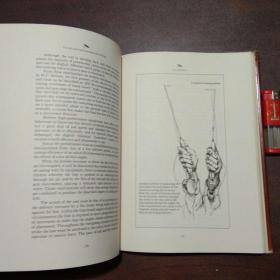Content:
Introduction:
Fishing is an age-old pastime that has been enjoyed by countless individuals across the globe. Whether you are a seasoned angler or a beginner, the thrill of reeling in a big catch is an experience that is unmatched. One of the most crucial aspects of successful fishing is learning how to properly bind a hook. In this article, we will delve into the essential techniques for baiting a hook and catching big fish. By mastering these techniques, you will be well on your way to becoming a proficient angler.
Choosing the Right Hook:
The first step in baiting a hook is selecting the appropriate one for your fishing expedition. Hooks come in various sizes, shapes, and materials, each designed for specific types of fish. When choosing a hook, consider the following factors:
- Fish species: Different fish require different hook sizes and shapes. For instance, smaller fish may require lighter hooks, while larger fish demand heavier hooks.
- Bait type: The type of bait you are using can also influence your hook choice. Live bait, such as worms or minnows, often requires a smaller hook, whereas artificial lures may require a larger hook.
- Fishing environment: The water body you are fishing in can also dictate the type of hook you should use. For instance, freshwater fishing may require lighter hooks, while saltwater fishing calls for heavier hooks.
Proper Hook Baiting Techniques:
Once you have selected the right hook, it is essential to learn how to bait it correctly. Here are some effective techniques for baiting a hook:
- Live bait: To bait a hook with live bait, such as a worm or minnow, thread the bait through the hook's eye. Ensure that the bait is securely attached and can move naturally in the water.
- Artificial lures: When using artificial lures, such as a spinner or a plug, insert the lure's hook into the bait's mouth or eye. Ensure that the lure is properly aligned and can swim naturally in the water.
- Soft baits: Soft baits, such as rubber worms or plastic grubs, can be attached to the hook using various techniques. Some popular methods include inserting the hook into the bait's body or threading the bait onto the hook's shank.
Securing the Bait:
After baiting the hook, it is crucial to ensure that the bait is securely attached. Here are some tips to help you achieve this:
- Check the bait's position: Make sure the bait is positioned correctly on the hook. If it is not, adjust it until it is in the desired location.
- Examine the hook's point: Ensure that the hook's point is exposed and can easily penetrate the fish's mouth. If the point is buried, trim the bait or reposition it on the hook.
- Test the bait's movement: Once the bait is attached, give it a gentle pull to ensure it moves naturally in the water. If it is too stiff or too loose, adjust the bait accordingly.
Presenting the Bait:

The way you present your bait to the fish can significantly impact your chances of catching a big catch. Here are some tips for presenting your bait effectively:
- Cast your line: Cast your line into the desired location, taking into account the wind, current, and distance.
- Retrieve the bait: Retrieve your bait at a natural pace. Avoid rapid or erratic movements, as this may spook the fish.
- Adjust your approach: If you are not getting any bites, try changing your approach. This could include altering your retrieval speed, changing your lure, or moving to a different location.
Patience and Practice:
Lastly, remember that fishing is a skill that requires patience and practice. The more you fish, the better you will become at baiting hooks and catching big fish. Keep experimenting with different techniques and baits until you find what works best for you.
Conclusion:
Mastering the art of baiting a hook is a fundamental skill for any angler looking to catch big fish. By selecting the right hook, baiting it correctly, and presenting it effectively, you will increase your chances of reeling in a trophy catch. Remember to practice these techniques and be patient, and you will soon become a proficient angler. Happy fishing!












